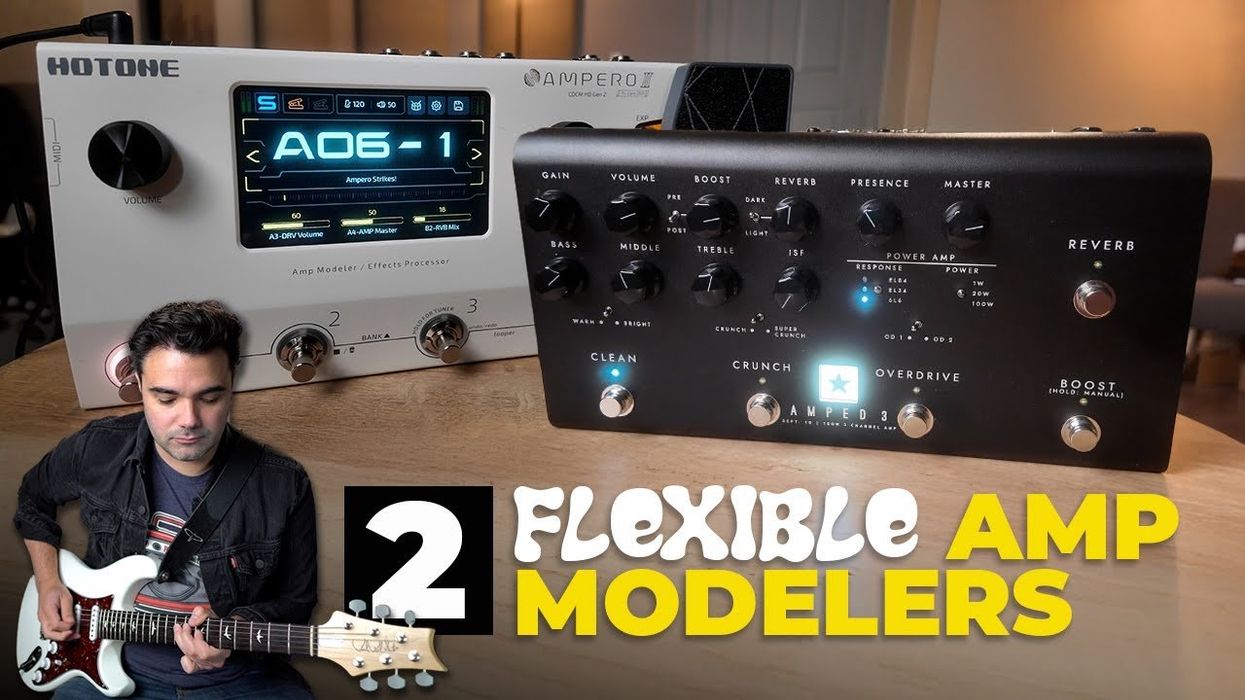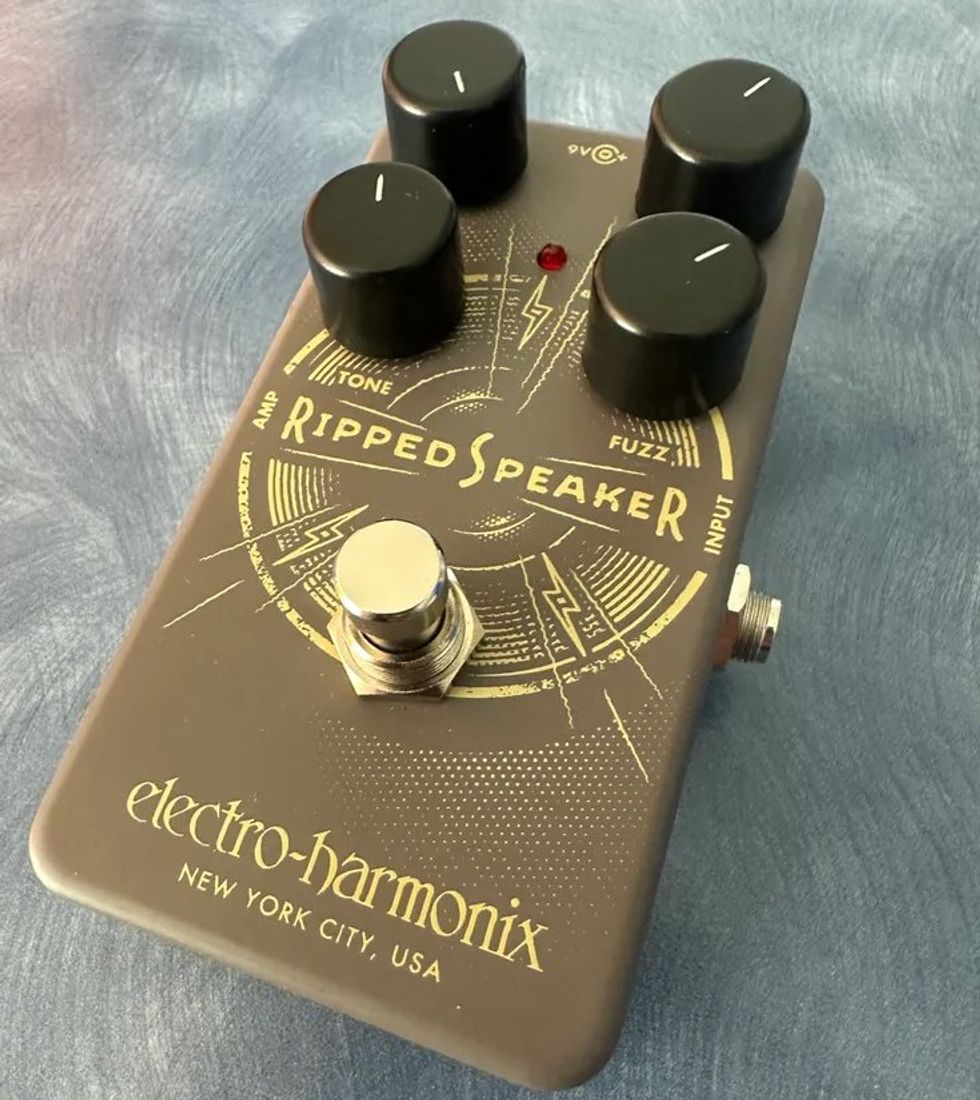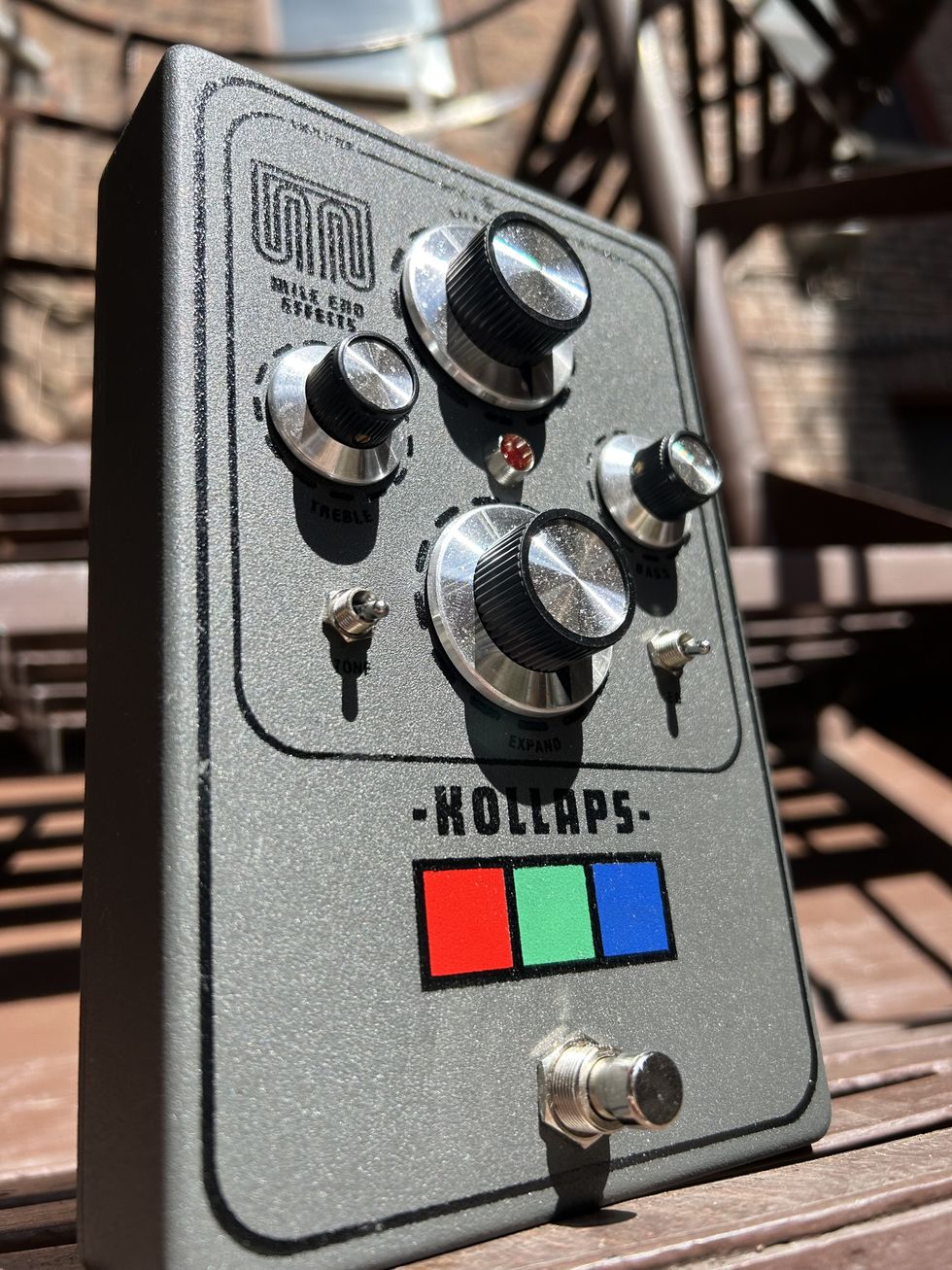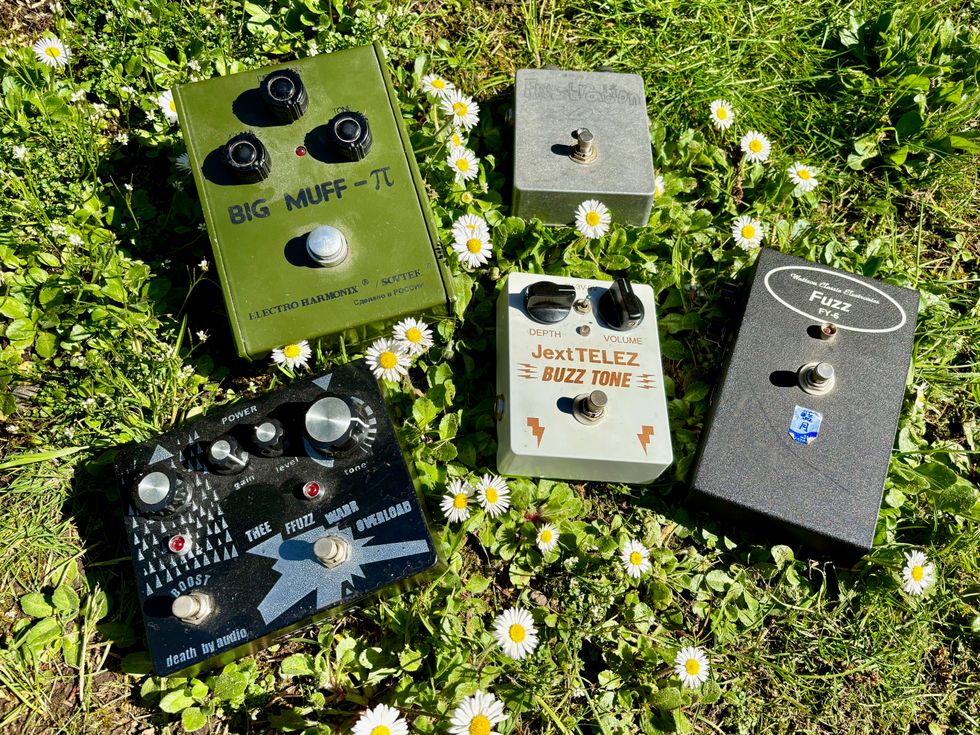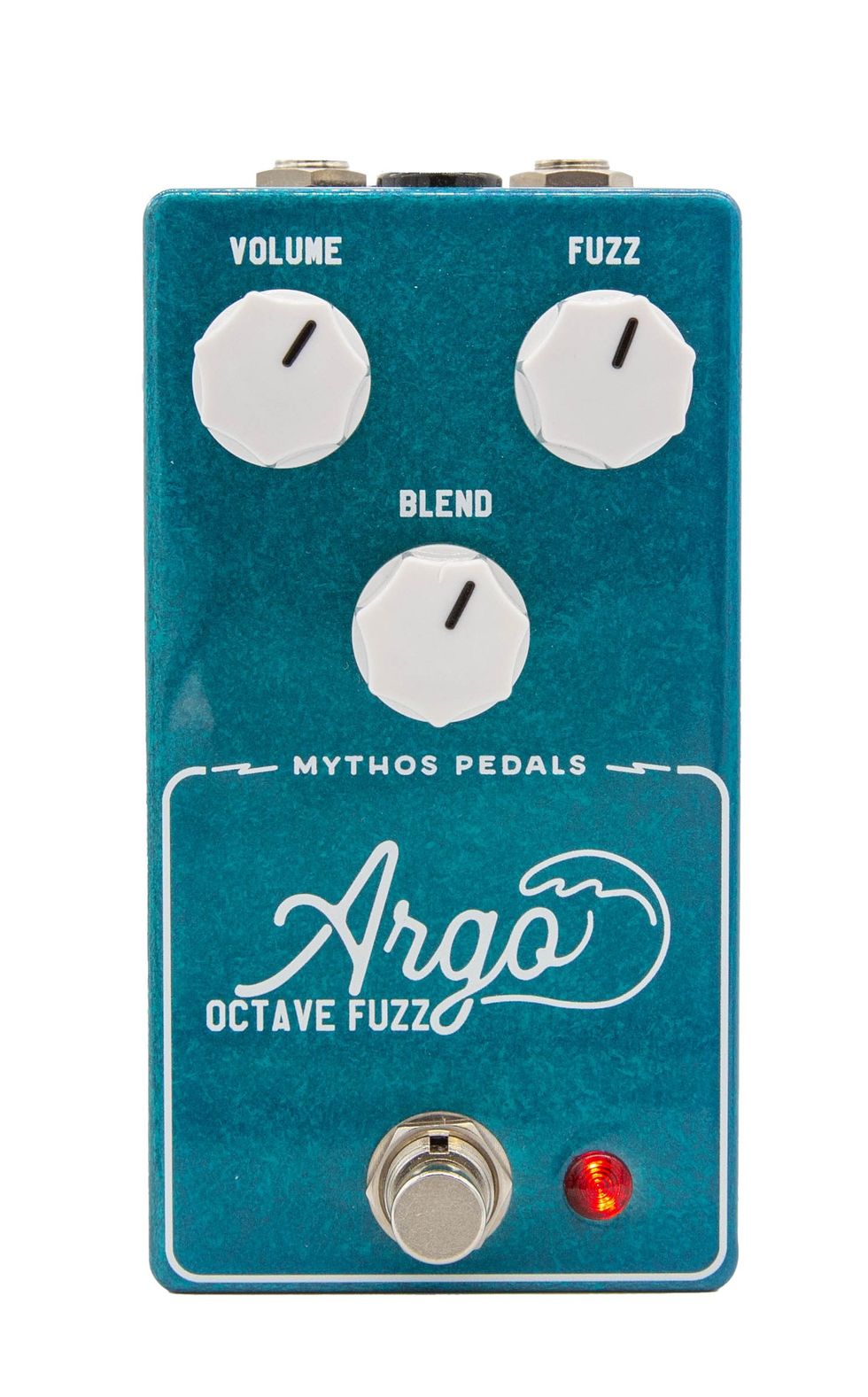PG's Chris Kies is on location in Milwaukee, Wisconsin, where he talks with the Soundgarden guitar and bass techs, as well as Kim Thayil and Ben Shepherd to learn what the band is using live on their King Animal tour.
In this segment, Thayil discusses why he's never looked back after discovering his favorite Guild at age 19 and demonstrates his go-to effect combinations. Plus, learn about Chris Cornell's Divided by 13/Savage amp setup and new Gibson signature model, and why Ben Shepherd's go-to bass is a simple MIM Fender with minimal modifications.
Kim Thayil's Guitars
Kim's main guitar is a black '90s reissue Guild S-100 (left) that he's had since the early '90s. He prefers this model because of the distance between the tailpiece and bridge, as he plays and bends strings behind the bridge. The neck on the guitar is a little thicker than an SG, and everything is stock on the guitar. He uses GHS .009 - .046 strings with low action on the S-100. He has another S-100 used with heavier, doubled strings for lower tunings. The '79 Guild S-300 (middle) has hotter stock DiMarzio pickups and is used for heavier songs and songs where he is the only guitar player and doesn't need the space behind the bridge. Kim's Gibson Firebird is a current production model and has doubled strings in EEBBBE tuning ("My Wave," "Been Away Too Long"). He also travels with the same red Firebird he used in the '90s as a backup, a Tele for a lighter sound, and a thin-bodied Les Paul Custom.
Kim Thayil's Amps
Kim combines a Mesa/Boogie Trem-o-Verb combo and a Mesa/Boogie Electradyne head dialed in to complement each other. The Trem-o-Verb is set quiet with a lot of gain and compression for the midrange and drive. The Electradyne is also set with a lot of gain but has more lows and more sparkle on the top end. The amps blend and run through two 4x12 cabinets with Celestion Vintage 30s for a full, complete sound. The Hughes & Kettner Rotosphere is run through the effects loop of the Electradyne, so there's one wet amp and one dry amp with the effect.
Kim Thayil's Effects
Kim's board is controlled by a Providence PEC-2 Routing System to engage or disengage effects or combinations of effects. He uses an Electro-Harmonix Micro POG for songs like "Halfway There," Custom Audio Electronics Boost/Line Driver is almost always on, and the CAE Boost/Overdrive is kicked in for a little extra dirt. He has a Hughes & Kettner Roto-Sphere used for the Leslie sounds on "Black Hole Sun," an Ibanez Chorus used for darker chorus sounds for arpeggios and harmonics like in "Nothing to Say," "Beyond the Wheel," and other early songs in dropped tunings as well as in conjunction with his behind-the-bridge playing, a new T-Rex Tap Tone delay that he uses to spice up solos and change things up, and a Boss DD-5 set to a backward delay. Other pedals on his board include a Boss NS-3 and Dunlop CAE Wah.
Chris Cornell's Guitars
Chris uses his new Gibson signature ES-335 in army green with aged binding, Bigsby, clear knobs, brushed nickel hardware, and Lollartron pickups. He also uses a black version, which does not have a Bigsby. He also uses a red Gibson ES-335 with Lollar Imperials, black Gibson Les Paul patterned after Neil Young's Old Black guitar with a P-90 in the neck and Seymour Duncan mini-humbucker, a Gibson 1960 VOS with an aftermarket bridge and Micro Farad .02 capacitors, a couple of '90s Gretsch Duo Jets in black and gold sparkle, and a Duesenberg Starplayer TV. His go-to acoustic is a Martin D-28 Marquis with a slightly wider neck for fingerpicking. Chris generally strings his guitars .012 - .052, with some custom gauges based on tunings.
Chris Cornell's Amps
Chris uses a Divided by 13 FTR 37 run at 15 watts with the Volume pulled out for a mid gain boost with two Savage Amps Roar combos with two 10" speakers in each. He uses different amps for different tonal flavors—he usually uses all three at the same time, but one Savage is brighter than the other, so he switches them on or off depending upon his tonal preferences.
Chris Cornell's Effects
Chris uses an Electro-Harmonix Deluxe Memory Man, two Dr. No Ultradrives (used as a transparent boost for more sustain), T-Rex Reptile, and a Menatone King of the Britains pedal.
Ben Shepherd's Basses
Ben's go-to bass is a MIM Fender P-bass nicknamed Baron. It has a Badass bridge and GHS heavy strings that are kept on the basses as long as possible to be as worn-in as possible—they're only changed when one breaks. Lena (middle) is a Fender '62 Reissue American P-bass, also with a Badass bridge.
Ben Shepherd's Amps
Ben uses an Ampeg SVT-VR and Mesa/Boogie Carbine M6. The Mesa is mostly used for stage volume and monitoring. There's an additional Mesa/Boogie combo on the side of the stage to monitor Kim's signal.




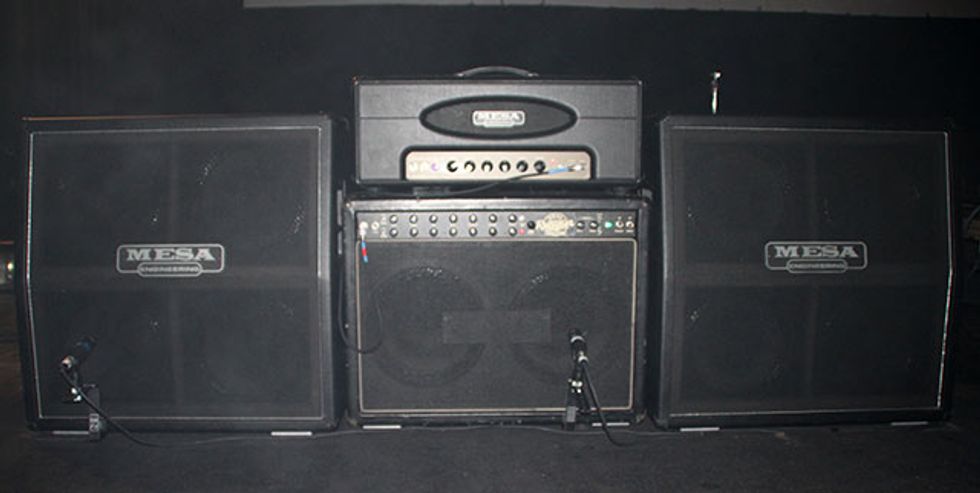



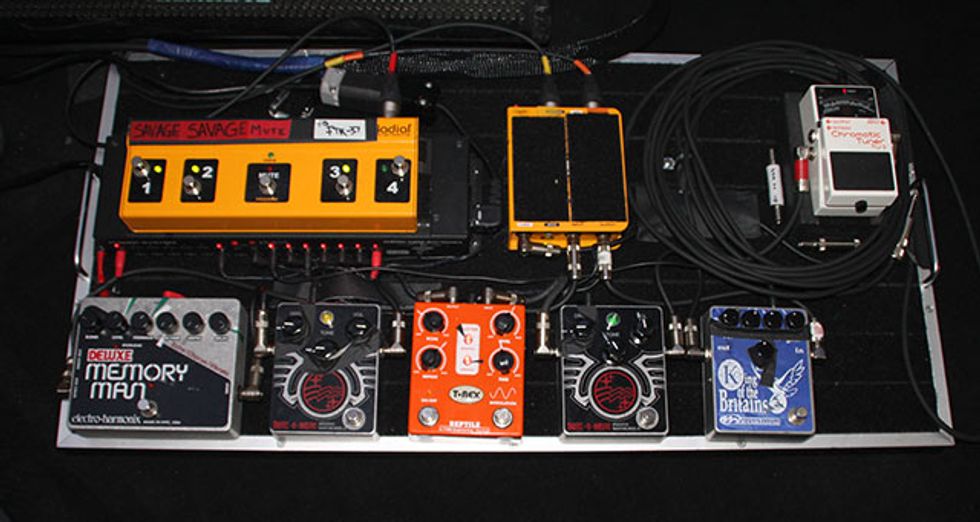

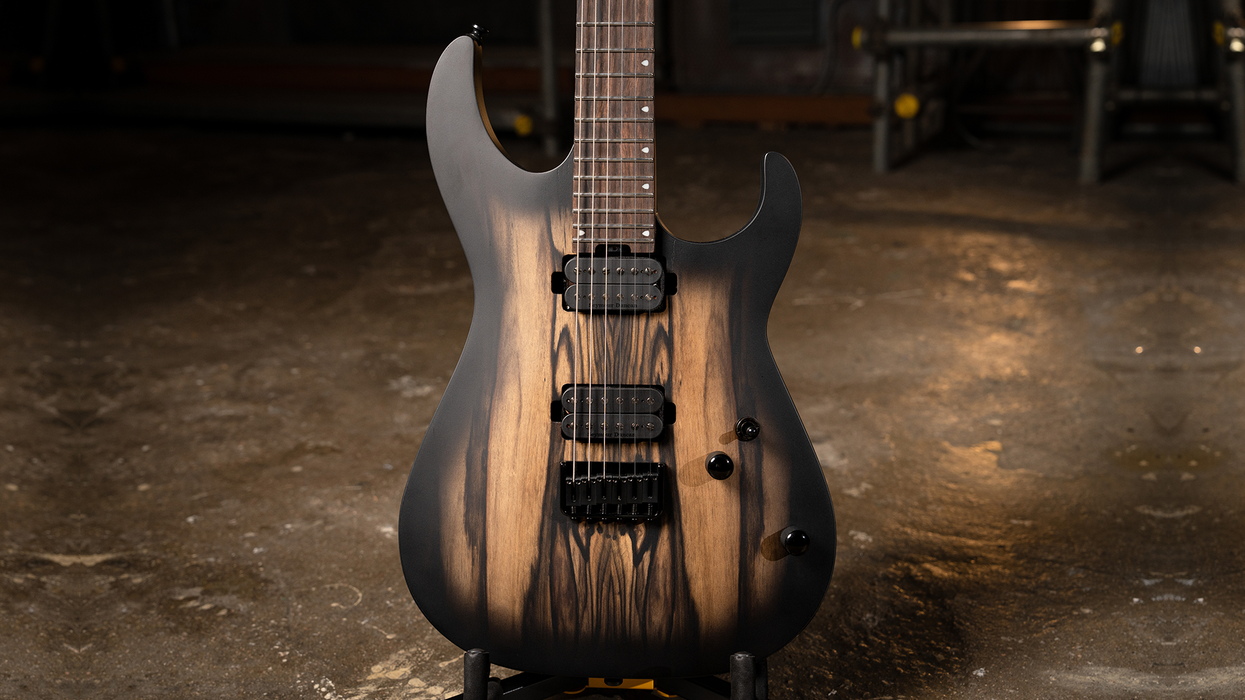
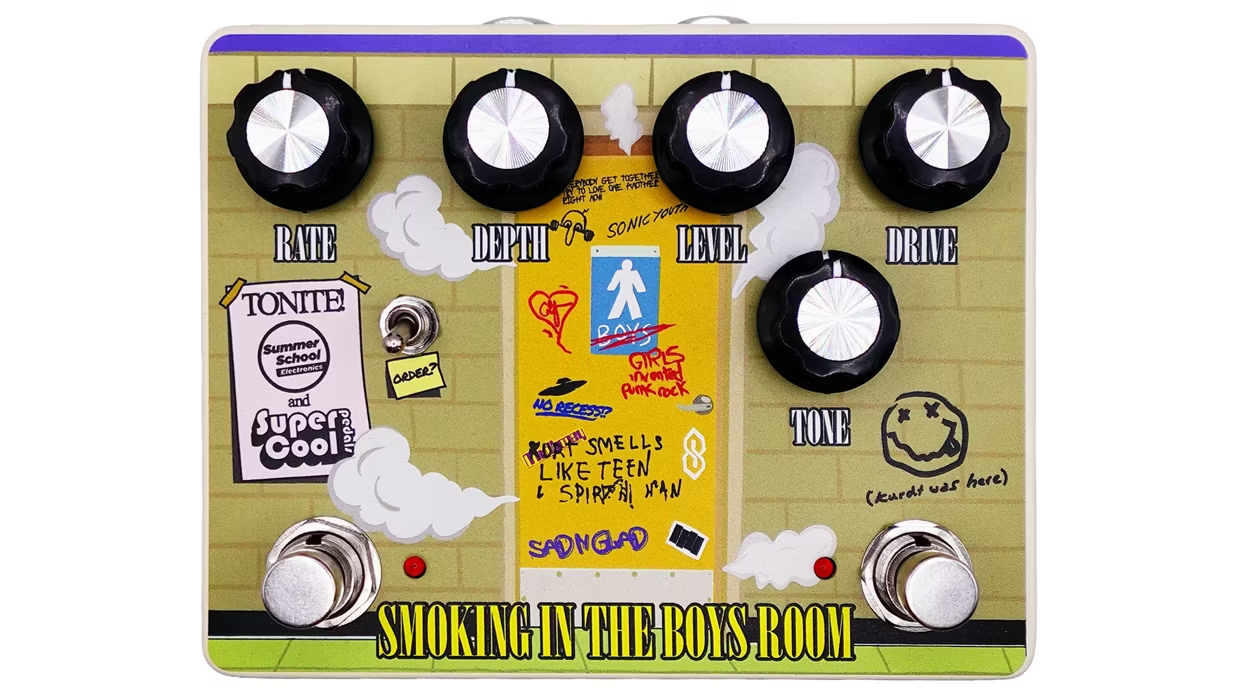



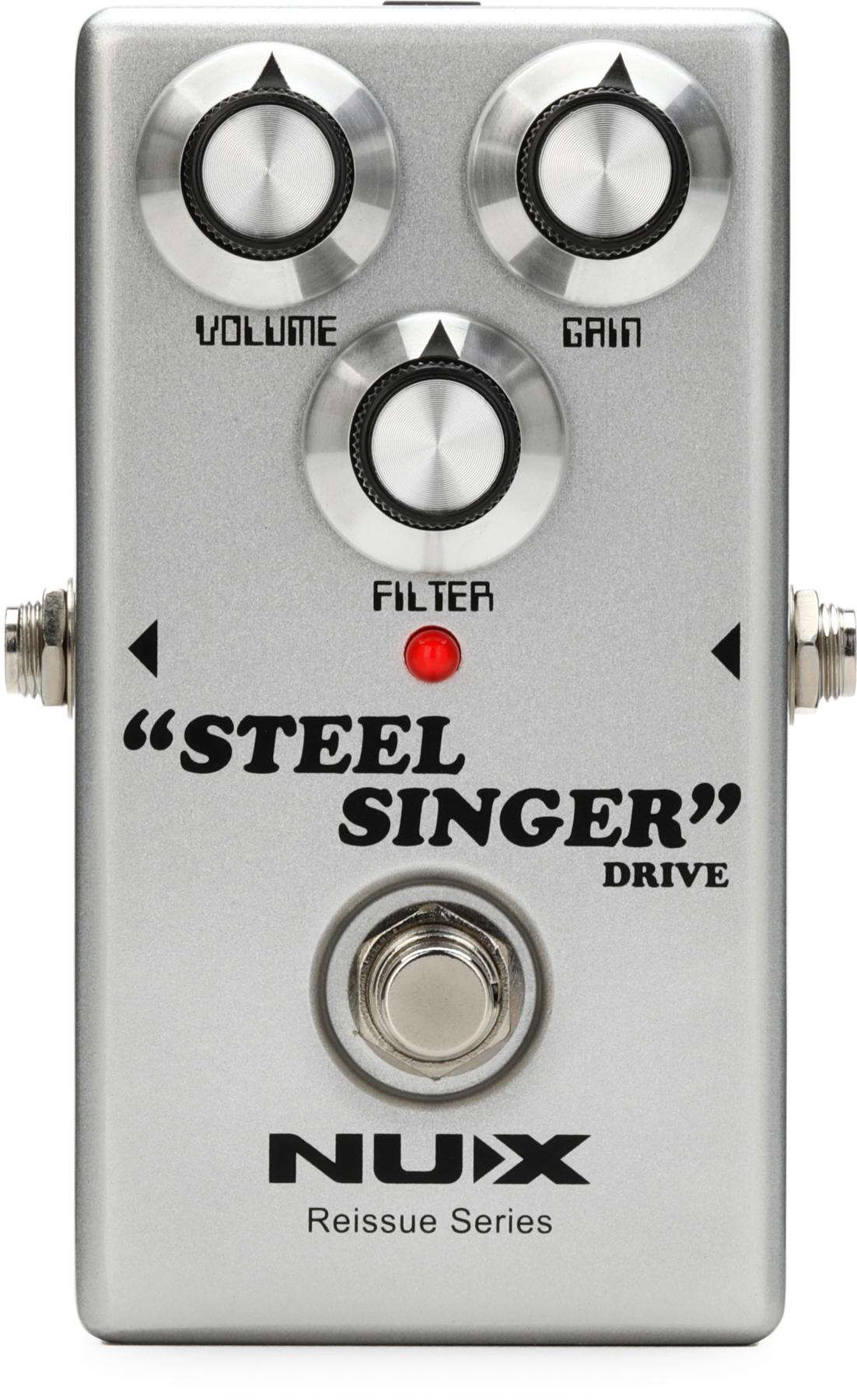



![Rig Rundown: Russian Circles’ Mike Sullivan [2025]](https://www.premierguitar.com/media-library/youtube.jpg?id=62303631&width=1245&height=700&quality=70&coordinates=0%2C0%2C0%2C0)





